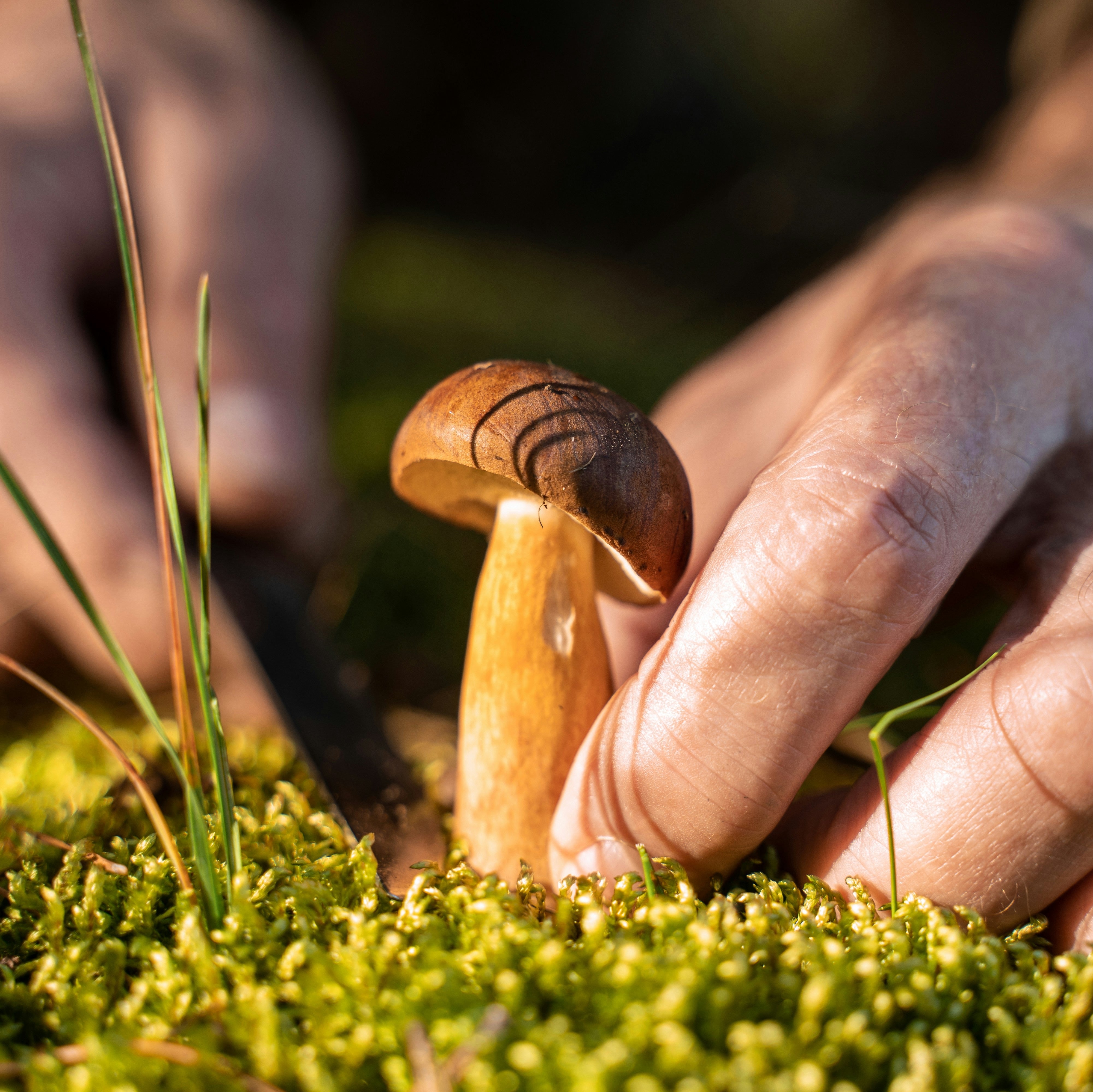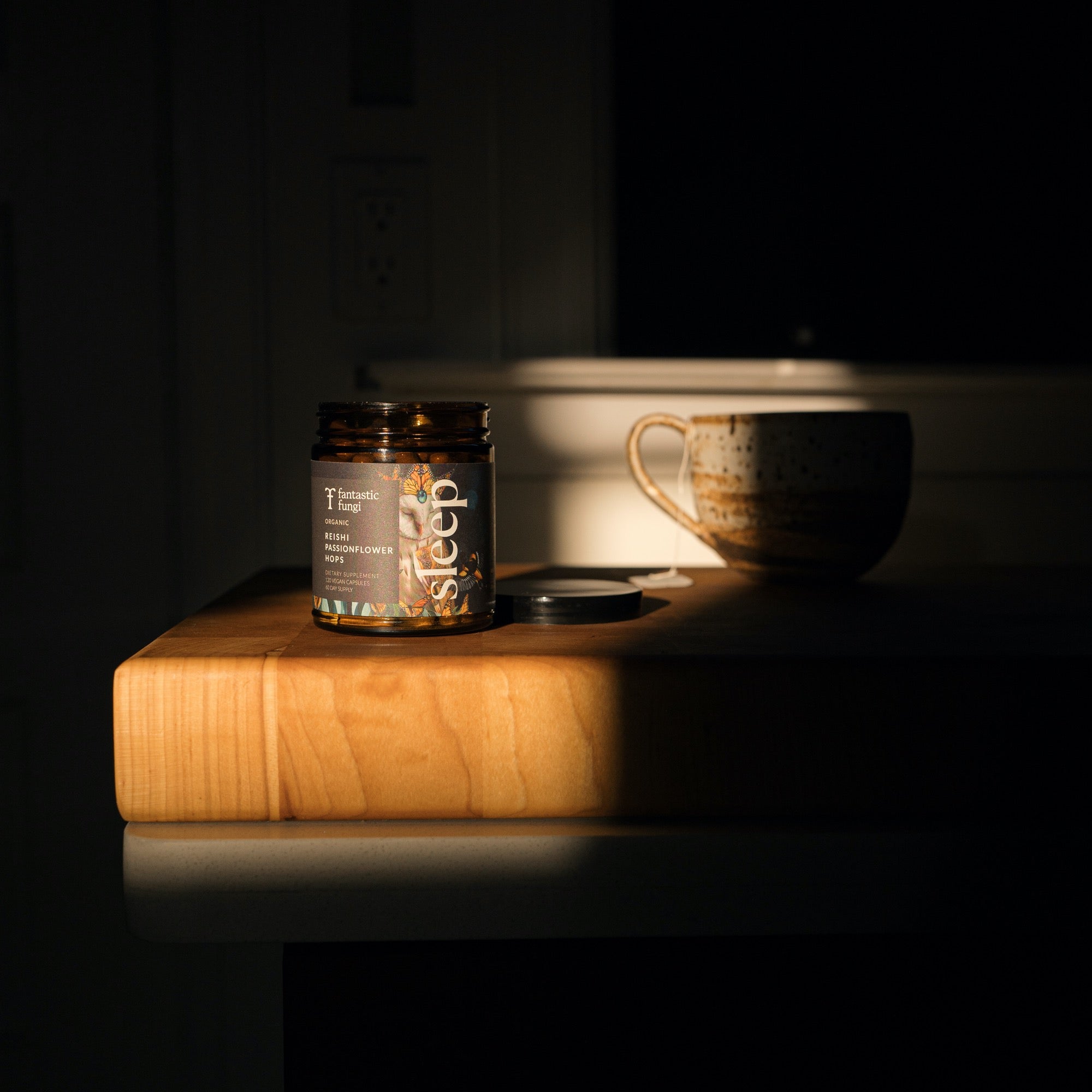
Practical Tips for Summer Foraging
Summer is one of the best times to get outside and hunt for your favorite mushrooms, from Chanterelles to Lion’s Mane. Many tasty species are in season right now, depending on your region. Before you head out into the woods in search of your fungi allies, learn how to stay safe and comfortable. We’re sharing practical tips for summer foraging, our favorite beginner-friendly species and more.
12 Practical Tips for Summer Foraging
- Verify the identity of every single mushroom you intend to eat, using a field guide or the guidance of an expert. Mushrooms can make you quite ill — and even kill you — so make safety your primary concern. Never assume you’re correct. Always, always verify!
- Take water and snacks, no matter how short your excursion. You’ll sweat and dehydrate faster in summer, and it’s better to be prepared. A good rule of thumb is one liter of water per hour.
- Tell someone where you’re going and download maps for offline use. Even better? Take a paper map. Avoid venturing too far off trails in areas you don’t know well.
- Wear long sleeves and pants to avoid insect bites — including ticks and mosquitoes.
- Pack a first aid kit, sunscreen, a hat, sunglasses and other emergency supplies with you.
- Only forage on land where you have permission. Avoid crossing onto private or restricted property. Know how to identify potential hazards, from poison ivy to poisonous snakes.
- Leave no trace. Mushrooms are scavengers, so when we litter, they may absorb what’s left behind.
- Familiarize yourself with new foraging spots. The last thing you want to do is collect mushrooms and find out there’s harmful runoff or a dump site nearby.
- Since mushrooms love moisture and humidity, keep an eye on the forecast. One of the best times to find mushrooms is in the days after a heavy rainfall. Ideally, the ground should be damp but not flooded. Head out early in the morning to avoid the heat and high sun.
- Take only your fair share, and leave plenty of mushrooms behind for others. Never take more than you can use, and avoid taking an entire patch. Leave behind some to proliferate the species!
- Mushrooms need to breathe, so collect them in a basket, paper bag or cloth bag. Avoid plastic bags and closed containers, which won’t allow them to breathe. After all, you will want to preserve your treasure until you get home and can cook them!
- Consider downloading an app like Seek by iNaturalist to get a cursory ID on new species (but verify using another source, too). This app can also help you get an idea of the species of fungi in your area — along with the native mammals, birds, insects, plants and more.
4 Summer Mushrooms Even Beginners Can Forage
These tasty, easy-to-identify mushrooms are perfect for newbies and seasoned foragers alike. Be sure to confirm every single mushroom, even if you’ve previously foraged in an area. Pick up a copy of our community cookbook for culinary inspiration — we included recipes for all these species and dozens more.
- Black Trumpets (Craterellus cornucopioides) are sometimes called Black Chanterelles or the Horn of Death. Not to worry — they are definitely edible! The name comes from the color, which makes the mushrooms look like they are well past their prime. Black Trumpets are delicious and can be cooked and used in place of Chanterelles.
- Chanterelles (Genus Cantharellus) are another tasty edible mushroom — but they do have look-alikes that are toxic. Always be certain before you pick or eat them. Most species are yellow or orange, but some are flame red! They also smell like apricots. If you have extra, dehydrate them for winter (Black Trumpets, too).
- Chicken of the Woods (Laetiporus sulphureus) are a favorite among mushroom hunters. They earn their name from the flavor, which resembles chicken. Look for this shelf polypore when they are still young and soft. Once they are older and dried, they are not edible. Be sure to cook them (and all fungi) thoroughly to avoid GI upset. Swap these ‘shrooms in for the chicken in favorite family recipes.
- Lion’s Mane (Hericium erinaceus) is a mushroom that confers health benefits and tastes delicious!* Tear into chunks or slice and cook, in place of crab meat or chicken. These mushrooms are best cooked from fresh, not dried.
Further Reading for New Fungi Foragers
Catch up on all our blogs filled with tips for safe, fruitful foraging all year long:
12 Sustainable Foraging Tips For Beginners
5 Things To Love About Mushroom Foraging In Springtime
4 Important Mushroom Safety Tips Every Forager Should Follow




